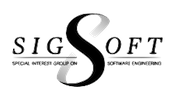8th International Workshop on Robotics Software Engineering (RoSE’26)
- co-located with ICRA 2026
- in-person event in Vienna, Austria
- dates TBD
Theme & Goals
Robotics is one of the most challenging domains for software engineering. Deploying even simple applications requires integrating solutions from several domain experts, including navigation, path planning, manipulation, localization, human-robot interaction, etc. Integration of modules provided by the respective domain experts is one of the key challenges in engineering software-centric systems, yet only one of the cross-cutting software concerns that are crucial to robotics. As robots often operate in dynamic, partially observable, and populated environments, additional challenges include adaptability, robustness, safety, and security.
RoSE aims to bring together researchers and practitioners to identify new frontiers in software engineering for robotics, discuss challenges arising from real-world applications, and transfer the latest insights from research to industry.
Topics of Interest
RoSE 2026 seeks contributions addressing, but not limited to, the following
topics related to robotics software engineering:
- AI agents in the context of robotic software systems
- AI-enhanced development of robotics systems
- Analysis of challenges in robotic software engineering
- Best practices in engineering robotic software
- Continuous integration and deployment in robotics
- Domain-specific languages and tools for the development of robotic software
- Empirical studies of robotics software and software tools, including its usability
- Engineering (heterogeneous) multi-robot systems.
- Identification and analysis of design principles promoting quality of service (e.g., performance, energy efficiency)
- Lessons learned in the engineering and deployment of large-scale, real-world integrated robot software
- Machine learning applied to robotic software
- Metrics measuring non-functional properties (e.g., robustness, availability, etc.) and their application to robotic software
- Mining software repositories of robotic systems
- Model-Driven Engineering methods and techniques applied to robotic software
- Processes and tools supporting the engineering and development of robotic systems
- Software architecture of robotic systems
- State-of-the-art research projects, innovative ideas, and field-based studies in robotic software engineering
- Static and dynamic analysis of robotic software
- Usability studies of robotics software and tools
- Variability, modularity, and reusability in robotic software
- Validation and verification of robotic software
Invited Speakers




Tentative RoSE ‘26 Workshop Program
| Time |
Title |
Who |
Slot |
| 09:00 |
Welcome to RoSE’26 |
RoSE’s OC |
15 min |
| 09:15 |
Invited Talk 1 |
TBD |
35+10 min |
| 10:00 |
Session 1: Paper Presentations |
|
|
| 10:45 |
Coffee break |
|
15 min |
| 11:00 |
Session 2: Paper Presentations |
|
|
| 12:30 |
Lunch break |
|
60 min |
| 13:30 |
Invited Talk 2 |
TBD |
35+10 min |
| 14:15 |
Interactive Session (e.g., breakout groups, tool demos) |
All participants |
60 min |
| 15:15 |
Coffee break |
|
15 min |
| 15:30 |
Invited Talk 3 |
TBD |
35+10 min |
| 16:15 |
Session 3: Paper Presentations |
|
|
| 17:00 |
Panel Discussion |
Invited speakers + panelists |
30 min |
| 17:30 |
Wrap-up & Closing Remarks |
RoSE’s OC |
|
Important Dates
- 14th January: Workshop Papers Submission
- 4th February: Workshop Papers Acceptance Notification
- 2nd April: Workshop Papers Camera Ready
- TBD: Day of the Workshop
Submission Guidelines
Prospective participants are invited to submit:
- Research papers – Peer-reviewed papers presenting preliminary or consolidated results, open challenges, lessons learned, or descriptions of tools and projects. Accepted papers will be published on the RoSE website. (max. 6 pages)
- Industry reports – Structured long abstracts highlighting new ideas, trends, or experiences from industry, which will not be peer-reviewed. Publication on the RoSE website is optional (max. 1 page)
- Idea papers – Structured long abstracts aimed primarily at young researchers who wish to share and discuss research ideas or paper plans. These contributions will not undergo peer review and will remain unpublished. (max. 1 page)
Workshop papers must follow the ICRA 2026 formatting instructions from the RAS, and will use a single blind submission process. All submitted papers will be reviewed on the basis of technical quality, relevance, significance, and clarity by the program committee. All workshop papers should be submitted electronically in PDF format through the portal at this link: TBD
On the use of AI (Artificial Intelligence) or AI-assisted technologies:
When submitting to RoSE 2026, the authors acknowledge that they comply with the Generative AI usage policy, based on existing policies proposed by IEEE, ACM, and Springer.
It is forbidden to:
- List Generative AI tools and technologies, such as ChatGPT, as authors of works;
- Use texts or sections entirely produced by generative AI tools
It is allowed (with explicit disclosure in the acknowledgments) to:
- Use generative AI tools to create parts of the content, with disclosure in the paper acknowledgments indicating what was generated and which tool was used. It is important to check the terms of use of the tool, which is the responsibility of the authors. For example, in the acknowledgments, you can use: ChatGPT was used to generate the first paragraph of Section 3 and to generate Table 3.2.
It is allowed (no need to disclosure):
- Use AI or AI-assisted technologies to improve the quality of images in terms of contrast and clarity;
- Utilize generative AI tools to edit and improve the quality of your existing text (similar to an assistant like Grammarly to improve spelling, grammar, punctuation, clarity, and engagement).
Organizing Committee
Program Committee
TBD










